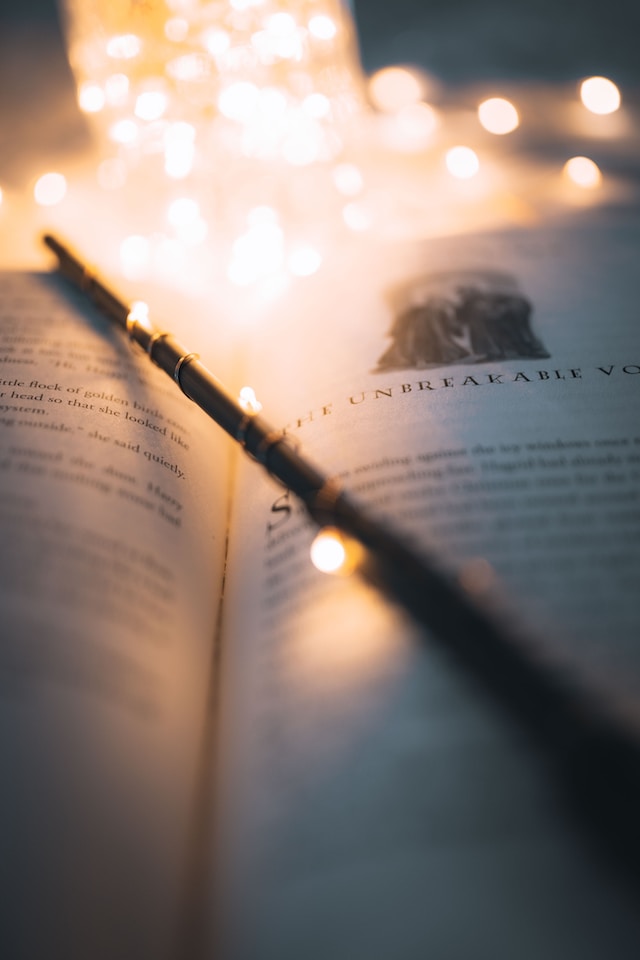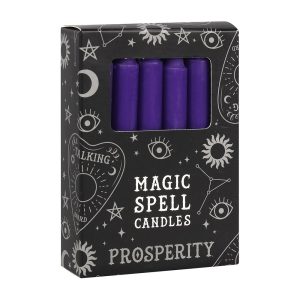Introduction
Spells in the Harry Potter universe are fascinating components of J.K. Rowling’s world-building, underpinning the series’ magical actions. They demonstrate a wide range of effects and are deeply rooted in linguistic and mythological origins. This article explores the etymology, pronunciation, and impact of some of the most notable spells in the series.
Lumos: The Illuminating Charm
Origin and Pronunciation
‘Lumos’ originates from the Latin word ‘lumen’, meaning ‘light’. It’s pronounced as /ˈluːmɒs/.
Effects
‘Lumos’ is a practical spell that illuminates the tip of the caster’s wand, providing light in dark places. The spell demonstrates the everyday utility of magic for wizards and witches, much like using a flashlight in the non-magical world.

Credit:Photo by Anton Darius on Unsplash
Expecto Patronum: The Patronus Charm
Origin and Pronunciation
‘Expecto Patronum’ translates to ‘I await a protector’ in Latin. It is pronounced as /ɪkˈspɛktoʊ pəˈtroʊnəm/.
Effects
This advanced and highly defensive charm conjures a ‘Patronus’, a protective entity that embodies the caster’s positive emotions. A Patronus is uniquely shaped for each individual, often taking the form of an animal significant to the caster. It’s primarily used to repel Dementors and Lethifolds.
Wingardium Leviosa: The Levitation Charm
Origin and Pronunciation
‘Wingardium Leviosa’ has roots in English and Latin. ‘Wingardium’ likely originates from the English word ‘wing’, while ‘Leviosa’ comes from the Latin word ‘levitas’, meaning ‘lightness’. The spell is pronounced /ˌwɪŋɡɑːrdiːəm lɛviːˈoʊsə/.
Effects
As Hermione Granger famously explains to Ron Weasley, ‘Wingardium Leviosa’ allows the caster to make objects levitate and move them in the air. Proper pronunciation and wrist movement are crucial for the successful execution of this spell.

Credit: Photo by Kenny Gaines on Unsplash
Expelliarmus: The Disarming Charm
Origin and Pronunciation
‘Expelliarmus’ combines the Latin ‘expellere’, meaning ‘to drive out’ or ‘expel’, and ‘arma’, which means ‘weapon’. The pronunciation is /ɪkˌspɛliːˈɑːrməs/.
Effects
As the name suggests, ‘Expelliarmus’ is used to disarm another wizard, causing whatever they are holding to fly out of their grasp. It is one of Harry Potter’s most frequently used spells, so much so that it becomes a signature move associated with him.
Avada Kedavra: The Killing Curse
Origin and Pronunciation
‘Avada Kedavra’ sounds eerily similar to ‘abracadabra’, an incantation used in stage magic, but its roots are believed to be Aramaic, meaning ‘let the thing be destroyed’. It is pronounced /əˌvɑːdə kɪˈdævrə/.
Effects
‘Avada Kedavra’ is one of the three Unforgivable Curses, illegal spells due to their harmful and deadly nature. The curse causes instantaneous death without causing any physical harm to the victim’s body. It represents the darkest aspects of magical power.

Photo by Shayna Douglas on Unsplash
Need more spells to sink your wand into? Here’s an expanded list of spells, or ‘charms’, that appear in the Harry Potter series, along with a brief description of their effects:
- Accio (Summoning Charm): This spell summons an object to the caster, potentially over a significant distance. Its incantation is “Accio” followed by the name of the target.
- Alohomora (Unlocking Charm): Opens locked objects. It can open doors and windows that are not protected by magic.
- Confundus (Confusion Charm): Causes the victim to become confused, making them easy to manipulate or trick.
- Diffindo (Severing Charm): This spell is used to cut or tear objects.
- Episkey: Used to heal minor injuries such as broken noses or split lips.
- Ferula: This spell creates a bandage and a splint for a broken limb.
- Impedimenta (Impediment Jinx): Temporarily slows down or stops the movement of an object or individual.
- Incendio (Fire-Making Spell): Starts a fire.
- Legilimens: Allows the caster to delve into the mind of the victim, enabling the caster to see the thoughts, memories, and emotions of the victim.
- Morsmordre (Dark Mark): Conjures the Dark Mark, the symbol of Lord Voldemort and his Death Eaters.
- Obliviate (Memory Charm): Used to erase specific memories from an individual’s mind.
- Petrificus Totalus (Full Body-Bind Curse): Temporarily binds the victim’s body in a position much like a soldier at attention.
- Protego (Shield Charm): Casts a temporary, invisible wall around the caster that deflects spells and physical entities.
- Riddikulus: Used when fighting a Boggart, “Riddikulus” forces the Boggart to take the appearance of an object the caster finds amusing.
- Stupefy (Stunning Spell): Renders the victim unconscious.
- Silencio (Silencing Charm): Silences the target.
- Scourgify (Scouring Charm): Used to clean something.
- Sectumsempra: A spell invented by Severus Snape that acts as a sword, causing lacerations and haemorrhaging on the victim.
- Tarantallegra: Forces the victim’s legs to dance uncontrollably.
- Waddiwasi: Shoots small objects out of the way at high speed.
Remember, these spells, like all magic in the Harry Potter universe, require knowledge, skill, and intention to be performed correctly. Some are considered dark magic and their use is illegal or highly regulated in the wizarding world.
Conclusion: The Enchanting Linguistics of Magic
The spells in Harry Potter present a rich tapestry of language and effect, adding depth to the magical world. Their roots in Latin and other languages lend authenticity to the spells, while their impacts range from everyday convenience to life-threatening situations. These spells not only serve as tools for the characters but also help drive the plot, underline the characters’ growth, and illustrate the ethical dimensions of magical power use.





